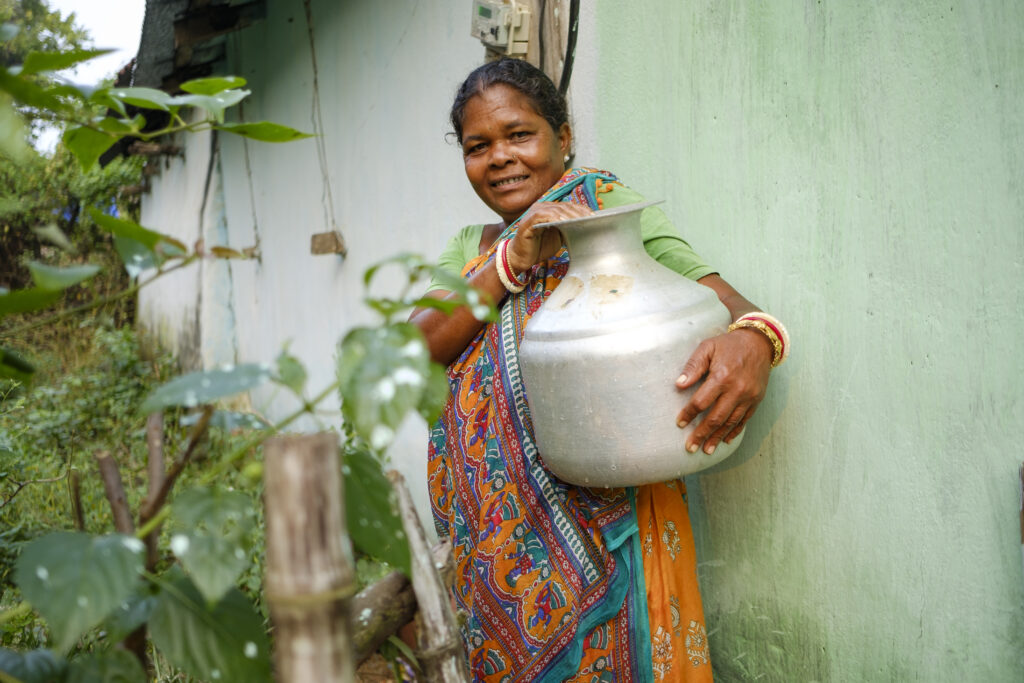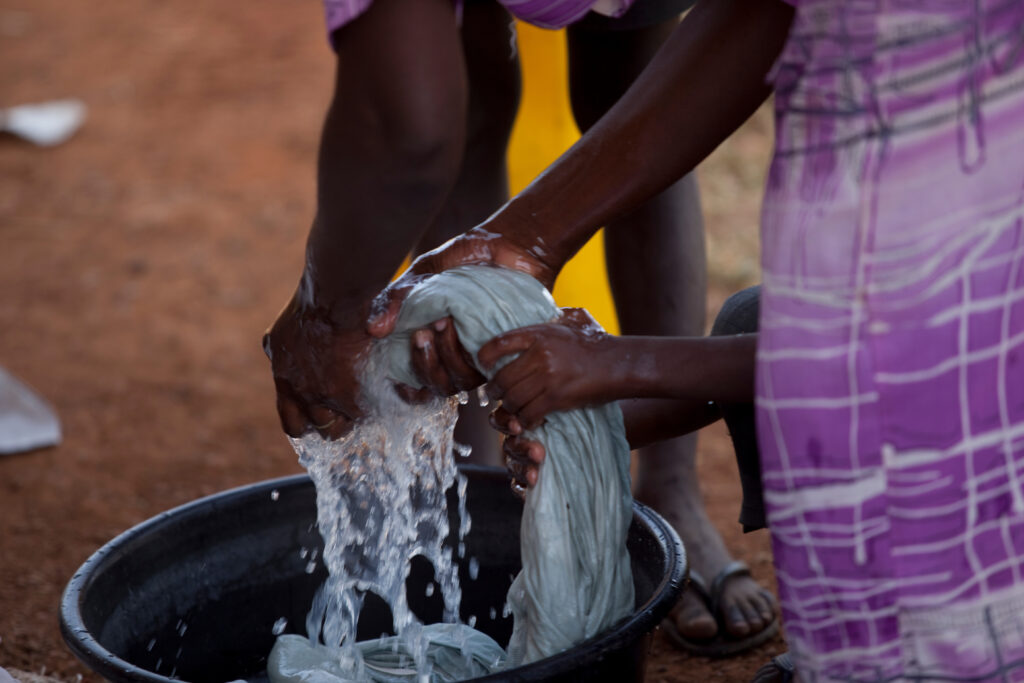Measuring Sustainability: Mapping Water For People’s Sustainable Services Checklist to the System-Strengthening Building Blocks
by Laura Burns, Senior Manager of WASH Financing and Sustainability, Water For People
Versión en español aquí.
The Water, Sanitation, and Hygiene (WASH) sector has been shifting its focus from piecemeal, project-based approaches to a system-strengthening approach, recognizing the importance of consolidating the entire enabling environment for WASH services. Members of Agenda for Change, a collaboration of like-minded organizations working to promote a sustainable, system-strengthening approach to achieve universal and sustainable WASH access, identified eight key building blocks for sustainable WASH Services:
- Institutional arrangements and coordination: The institutions related to WASH service provision and service authority exist, are clearly defined, and have sufficient capacity. There is a coordination mechanism to coordinate WASH sector activities.
- Monitoring: Monitoring frameworks exist and are used to measure and report on the quality of services being delivered.
- Planning: Clear frameworks exist for the development of plans and budgets at all levels.
- Water resources management: A clear framework for allocation and management of water abstraction and water quality exists and is being implemented.
- Service delivery infrastructure: Clear frameworks, capacity, and roles exist throughout the project cycle for the development and maintenance of infrastructure, including procurement, construction, and asset management.
- Finance: Clear frameworks exist for financing service delivery, including finance flows and responsibilities for full lifecycle costs and identified sources for each lifecycle component.
- Regulation and accountability: A clear regulatory framework exists, regulatory functions are clearly defined, regulatory capacity exists, and equity and accountability mechanisms are in place.
- Learning and adaptation: Capacity and frameworks exist to capture lessons learned and to adapt and update service delivery models and other building blocks in the face of change and lessons learned.
As the sector moves towards this system-strengthening approach and the identification of key components, it is important to assess the strength of that environment and its components. The ultimate goal of a WASH system is that services are universal and sustainable – that the system can withstand shocks, whether environmental, political, or economic. Measuring system strength is more nebulous than measuring functionality, access, and service levels, which focus on collecting data on specific infrastructure. Water For People initially measured sustainability by assessing collective service provider performance. However, this is just one sliver of the WASH system and sustainability of services.
Recognizing this gap, in 2015 Water For People began the process of developing the Sustainable Services Checklist (SSC) to assess the broader WASH system in an entire district. The SSC is a tool used with district government partners to assess the strength and sustainability of WASH services in a district. It combines the collective quantitative assessment of service provider performance with a qualitative assessment of the broader system strength at the district level. The SSC was officially launched in 2017 and has since been applied annually in all nine Water For People country programs to evaluate the enabling environment for long-term WASH service provision. While the SSC is contextualized to a specific district’s context, it has eight core indicators that are consistent across three categories:
- Service Authority: The capacity of the Service Authority, or the entity responsible for regulating WASH services in a district, to manage, finance, and monitor WASH services in a district, with a strong structure.
- Service Provider: The capacity of the Service Provider, or the entity responsible for day-to-day provision and management of water services, to finance, operate, and manage WASH services, with a strong structure.
- Water Resources Management: The capacity of the responsible authorities to ensure the quality and quantity of water sources in a district.
The SSC is completed with data from two different sources:
- Annual monitoring survey data to inform service provider metrics.
- Annual interviews with district partners to inform service authority and water resources management metrics.
The scores, and the process of developing the scores, highlight the importance of the service authority, service provider, and water resources management in creating an enabling environment that will support water and sanitation services forever. While Water For People was an early adopter to measuring the WASH system, other organizations have also implemented different tools to measure the WASH system at national levels. Resources to understand the breadth of these tools can be found in reports written by Sustainable Services Initiative, WaterAid, and Agenda For Change.
While not specifically called a "building block assessment", Water For People’s SSC measures building blocks from the perspective of assessing the sustainability of services within a district. Just as Water For People’s level of service indicators can be mapped to JMP indicators, the SSC indicators can be mapped to the eight building blocks of sustainable WASH systems (In the list below, and in Figure 1).
Institutional Arrangements and Coordination
Indicator 1: Service Authority Structure
Indicator 5: Service Provider Structure
Finance
Indicator 2: Service Authority Finance
Indicator 6: Service Provider Finance
Service Delivery Infrastructure
Indicator 3: Service Authority Management
Indicator 7: Service Provider Operation and Maintenance
Planning
Indicator 1: Service Authority Structure
Indicator 4: Monitoring
Regulation and Accountability
Indicator 1: Service Authority Structure
Indicator 5: Service Provider Structure
Learning and Adaptation
Indicator 4: Service Authority Monitoring
Monitoring
Indicator 4: Service Authority Monitoring
Water Resources Management
Indicator 8: Water Resources Management

It is clear that Water For People’s eight indicators measure across all building blocks, with indicators seeking to measure, at times, more than just one building block. The SSC was designed not as a definition of the WASH system, but as a measurement tool to assess the strength of the WASH system. The indicators are organized to clearly identify responsible actors, assigning responsibilities for actors in the WASH system. However, there are areas where additional assessment beyond the SSC is necessary. For example, while the SSC does measure components of institutional arrangements and coordination, specifically related to the functioning of service providers and service authorities, additional actors, such as ministries of health, environment, and education, should be assessed for a more complete picture of the operating environment. Additionally, the SSC is not a network analysis that looks at the way different actors are interacting within the system. The same is true for regulation and accountability; while the SSC does a good job of measuring this at a district level, we know that national regulation also plays a key role in influencing WASH services in a district and should be analyzed to better understand the WASH system. Water For People is actively working to analyze national system strength to better understand the national WASH system in each country.

Historically, as can be noted in SSC trend results for water services (Figure 2), Water For People’s largest challenge areas center around service provider finance, water resources management, and government-led monitoring. Given this, it can be inferred that, globally, some of the most difficult building blocks to strengthen and support will primarily revolve around government-led monitoring, finance, and water resources management.
Now that as a sector we have identified the key building blocks of strong WASH systems, organizations should seek to analyze these blocks, either through the SSC or other sector tools. By assessing the strength of WASH systems, organizations and their government partners will be able to focus their efforts on specific actions to improve the sustainability of WASH systems. Additionally, sector non-governmental organizations should collaborate at the national level, both in assessing system strength and responding to the key challenges identified by those assessments, to ensure that we are working in a more harmonized and impactful way to develop, assess, and maintain strong WASH systems across entire countries.



